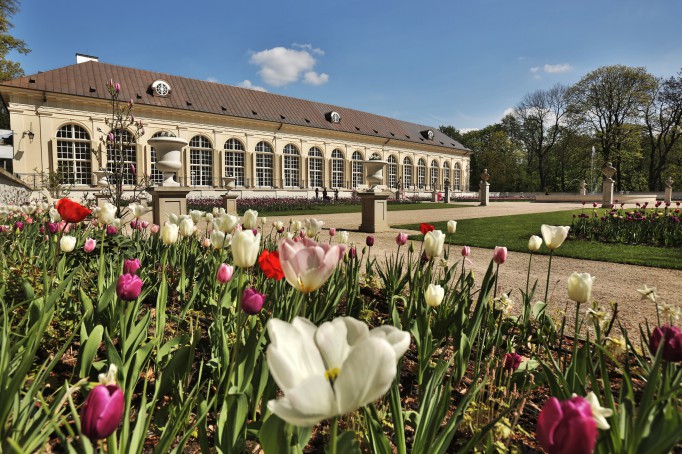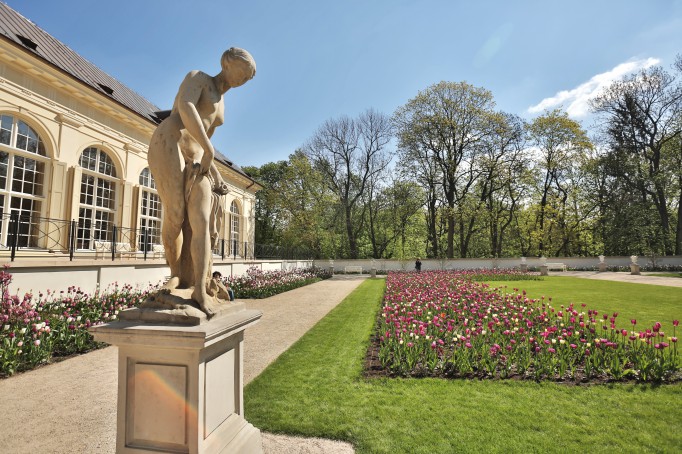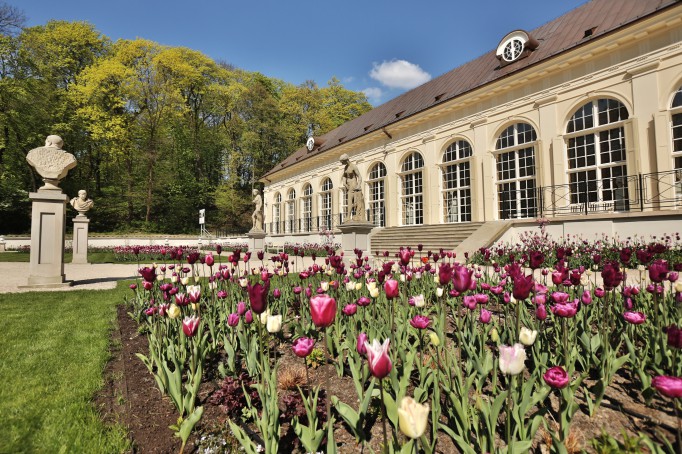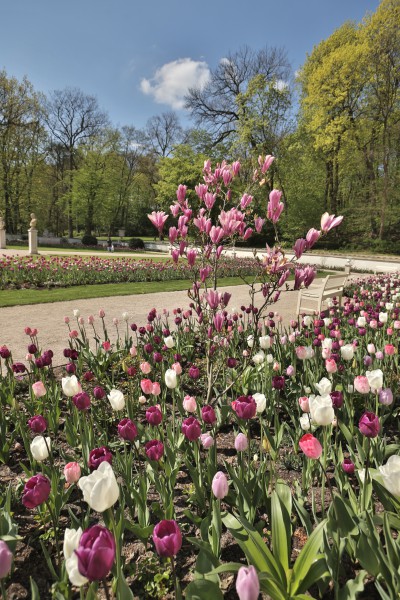Feel like in the Netherlands. Visit the new garden near the Old Orangery

Tulips, narcissi, roses, hydrangeas, and perennial plants - in the coming months, hundreds of these plants will bloom in the Dutch Flower Garden near the Old Orangery. The first inflorescences, which were designed by the Dutchman Niek Roozen, will be available to admire from the end of April - since 29 April.
In spring, the Orangery Garden (the Dutch Flower Garden) has gained a new look thanks to numerous flowers, perennial plants, and shrubs. On stretches of lawn crossed by paths, four L-shaped flower beds have been created. Tulips and an entire row of small perennials will grow there.
Flower beds, which had existed before near the walls surrounding the Orangery Garden, have been enriched with additional vegetation – both annual and perennial. They also contain roses, hydrangeas, narcissi, magnolias, and rhododendrons.
- In the Dutch Flower Garden, about 40 thousand bulbous plants, numerous rose shrubs, and beautiful rhododendrons will bloom, delighting the visitors with a wide range of colours from whiteness to dark violets, Barbara Werner, Chief Gardener in the Royal Łazienki, announced.
After 15 May, as every year, the garden will additionally feature citrus trees placed in wooden pots which will be standing along the alleys.
The idea of enriching the Orangery Garden came from Willem-Alexander, King of the Netherlands, during his visit to the Royal Łazienki in 2014. The design prepared by a Dutch landscape designer – Niek Roozen, came to fruition as a result of the generosity of Dutch and Polish companies who liked the idea of decorating the Old Orangery garden with flowers so much that they donated their flowers for the undertaking.
- It is an example of great Polish-Dutch cooperation – the Dutch landscape designer, Niek Roozen, emphasized.

According to Barbara Werner, Chief Gardener of the Royal Łazienki, the Dutch Flower Garden is intended to show the tradition of the Dutch passion for flowers, nature, and the general beauty that is present in the Royal Łazienki and which has always been associated with Dutch art.
- At the end of the 17th century, the Dutchman Tylman van Gameren left his mark in the Palace on the Isle and the Hermitage building; from 1664, he worked for Stanisław Herakliusz Lubomirski – the owner of Ujazdów at the time. From 1672, this highly educated architect stayed at the court of King Michał Korybut Wiśniowiecki, by whom he was granted indygenat, thereby becoming a Polish nobleman – Barbara Werner, Chief Gardener of the Royal Łazienki, stated.
The Orangery Garden has preserved its regular layout, with a fountain situated in the middle, i.e. the layout which can be seen on building plans from the 18th and 19th century. It was recreated, according to historical accounts during the revitalization of the Old Orangery and its immediate surroundings.








